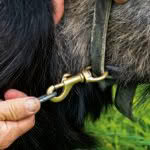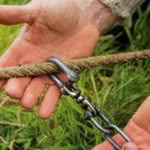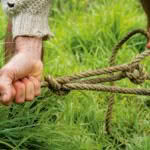Fire prevention, done by a New Zealand block expert
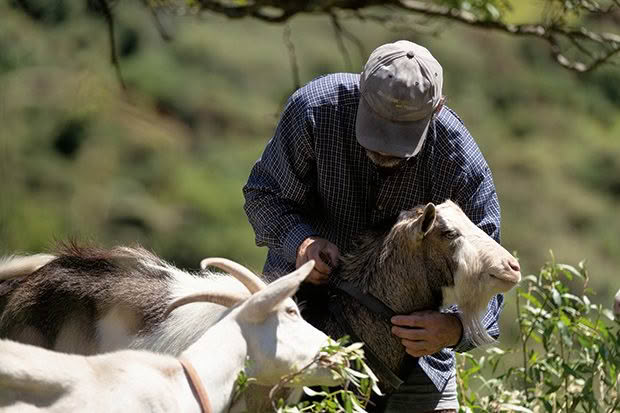
Hot, dry weather across the world has shown just how easily wildfires can kindle and spread. Fortunately, some of the best and most cost-effective fire prevention experts can be found on many New Zealand rural properties.
Words: Nelson Lebo Photos: Brad Hanson and Jade George
Fires burned over 700,000 hectares of Europe during the northern summer – an unenviable record. Individual fires peaked at over 2,300 – far above the 15-year running average of 1,349. While Spain, Romania, Portugal, France and Italy bore the brunt of the scorching infernos, the United Kingdom was also affected, with 750 individual fires – up 200% from the previous year. All in all, it was a season that reminded the world that fires are an increasingly deadly and destructive threat, even for countries previously thought immune.
TINDERBOX CONDITIONS
Whether inside a wood burner in July or across a dry hillside in January, any fire needs three basic ingredients to ignite and spread: fuel, oxygen and heat. Commonly known as the “fire triangle”, these three components must come together in the right mixture for a blaze to ignite and sustain over time.
Dry grasses and short shrubs are the perfect fuel for wildfires, allowing for fast, hot combustion and spread. The accumulation of these fuels over time exacerbates the risk of catastrophic wildland fire, especially when combined with hot temperatures and high winds.
The National Oceanic and Atmospheric Administration (USA) identifies climate change as a key driver of the increasing impact of wildfires, by contributing to higher temperatures, extended droughts and extended periods of low humidity.
While the effects of climate change will be with us for the foreseeable future, most landowners can manage one side of the triangle – fuel. For many of us, there’s an ancient way of doing this that’s right under our noses – goats.
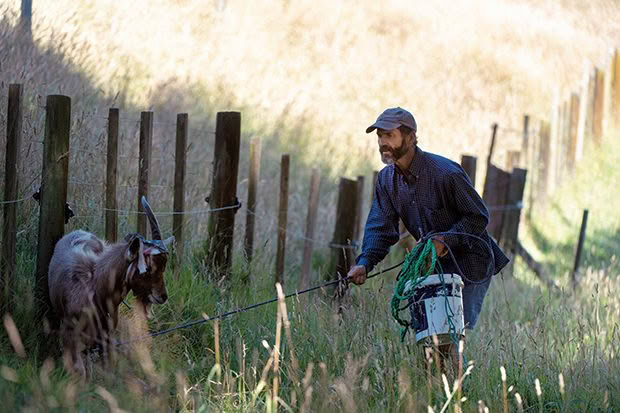
Nelson temporarily tethers his goats in places where they can reduce the accumulation of dry shrubs and grasses, therefore creating firebreaks.
CULTURAL EXCHANGE
With Spain facing such severe fires this past year, the city of Barcelona has recently deployed a herd of nearly 300 sheep and goats to reduce fire danger in Collserola Park – 8,000 hectares of open space perched on the edge of the city.
The hungry stock are released into wildfire-prone areas where they eat and trample dry vegetation that has built up over time. The results of this mob grazing are pockets or strips of land that can act as fire breaks.
Depending on the location, the goats and sheep are allowed to roam semi-wild or managed by a shepherd for a period of time.
While the practice may be new to Barcelona, other parts of Spain such as Andalusia have been doing it for almost two decades. Officials there report that it’s 75% cheaper than having land cleared mechanically. But the practice is credited to be much older than that – dating to times long before bulldozers and civic policy.
With tight municipal budgets and rising costs of diesel fuel, hiring workers that don’t require pay checks and are sustained by the very substances they’re hired to clear is a bit of a no-brainer. In California, where both taxes and fire danger are high, a dozen companies throughout the state are contracted to provide targeted grazing with goats. My wife and I stumbled upon one unexpectedly over a decade ago.
On a return flight from New York to Auckland in 2010 we missed the connection in San Francisco by 30 minutes. We were treated to a 24-hour layover courtesy of Air New Zealand. Walking around the hilly city, we came upon a herd of goats grazing an overgrown gully. At the time we were perplexed. Nowadays, we think it’s common sense.
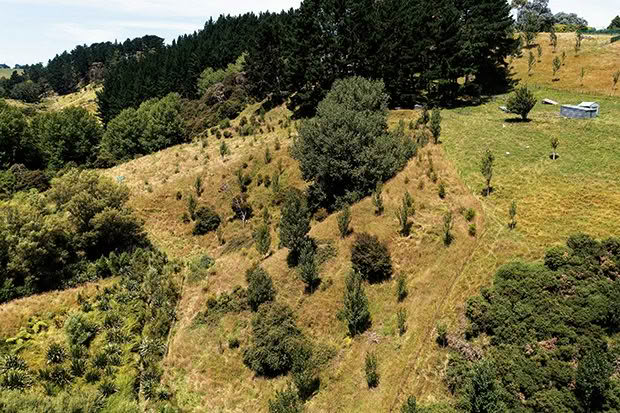
URBAN GRAZING
City Grazing is a San Francisco non-profit that uses goats for land management and fire risk mitigation. The organisation rents goats to both private and commercial customers. They highlight the benefits of their approach as:
1) Controlling the spread of invasive plants and promoting the regrowth of perennial native species.
2) Improving soil by converting plant matter directly into pelletised fertiliser – in other words goat manure.
3) Sequestering carbon because this approach to managed grazing results in deeper and healthier root systems for the perennial natives that draw down atmospheric carbon and store it
in the soil.
THE NZ CONTEXT
Wildfire is becoming a growing threat in New Zealand as summer conditions in parts of the country get hotter and drier. At the same time, an increasing number of landowners have chosen to convert marginal grazing lands to forests – either native or non-native. But in the area between grazed hillside and full canopy cover, the land is particularly vulnerable to wildfire. The kindling is usually tall, dry grass, especially in late summer and early autumn.
That’s where the goats come in. There are already ways in which goats can and are used as part of land management strategies in New Zealand. Often, their main purpose is to graze and control invasive weeds. But at the same time, it’s critical to control the destructive potential of the goats themselves. This may require high quality portable fencing and/or tethering – each of which comes with challenges.
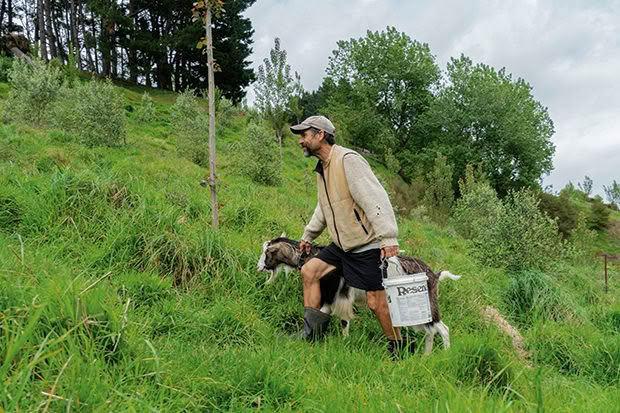
OUR APPROACH
We’re in the process of establishing 1.2 hectares of native bush and have chosen to manage fire risk in two ways:
1) running kunekune pigs through our plantings as they are the only stock that will eat grass but not browse young trees;
2) tethering goats along fence lines and farm tracks to create fire breaks around and through the emerging forest.
As on many other parts of the farm, we have taken an integrated approach to managing this block which could be described variously as agroforestry or silvopasture – the practice of integrating trees, forage, and domesticated grazing animals in a mutually beneficial way. While there’ll be plenty of grass to eat for years to come, trees will eventually shade much but not all of it out. At some point, we may remove the kunekunes but will likely retain the goats to maintain the farm track and fence lines while supplementing their diet with browse cut from the trees.
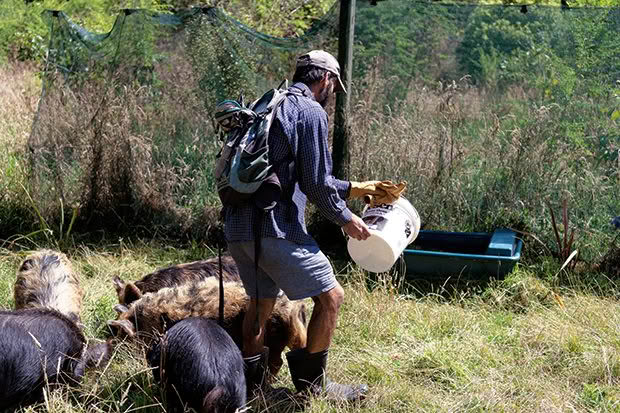
Tethering is a contentious subject in New Zealand’s farming community. But in my experience, I’ve seen healthier and happier tethered goats than some stock kept in paddocks with no shade in summer and/or saturated soils in winter. According to the Animal Welfare (Care and Procedures) Regulations 2018, tethered goats must have access to food, water, and shelter at all times with the exception of an animal that is “temporarily tethered under constant supervision to facilitate handling of the goat for therapeutic purposes, including preventative treatment.”
Food, water and shelter are key for happy and healthy goats, wherever they are. While tethered, our goats have easy access to food in the form of the overgrown grasses and weeds that they’re clearing.
We supply water in a sturdy bucket, although I always tie the handle to a fence post, batten, or non-palatable tree such as mānuka so it won’t tip over.
Shelter is more difficult to provide. We use two types of portable shelters for protection from both rain and sun, as well as established trees to provide shade on fine days without forecasted rain.
The goats are shifted onto fresh grass everyday and sometimes twice a day. They’re also given time off the tether.
FAILSAFE SYSTEMS
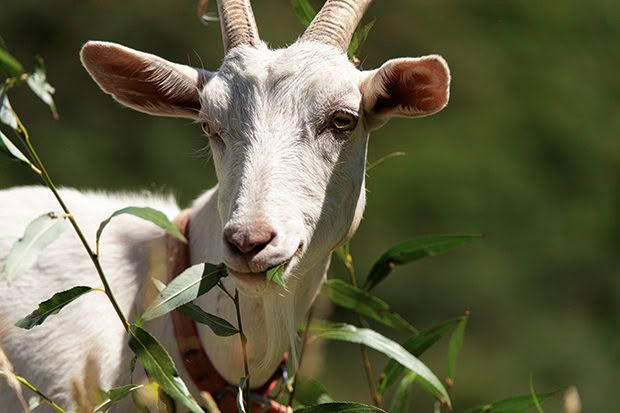
How can you prevent goats getting loose or clearing too much.
Rule #1: Buy quality equipment.
This should go without saying, but needs to be emphasised. The last thing you want is a loose goat eating your trees.
What’s required? High quality collar (not from the dollar store); dog collar clip with swivel; length of chain up to one metre; double eye swivel; two D-shackles; high quality rope.
Rule #2: Learn your knots.
- A brass dog clip reverse-mounted on Luigi’s collar for quick on-and-off handling.
- Double swivel with two D-shackles helps prevent tangling.
- Tying off a trucker’s hitch after pulling tension.
- Tying a bowline to a fence post.
A bowline and trucker’s hitch are all you’ll need for effective tethering. They’re well worth learning for many other applications on the block including securing a load on a vehicle. The bowline is recognised as a very strong knot that is also easy to untie after it has been tensioned. The trucker’s hitch is an excellent way to tie off a tensioned rope without losing any of the tension.
Most of the time you’ll want a taut line either running along the ground or over the goat’s head. (Anything in between can result in tangled trouble.) In this case, at least one of the knots must be a trucker’s hitch in order to pull tension. I often prefer to use two of these knots if I am leap-frogging the goats onto fresh grass, as the rear knot can be easily untied, moved forward and re-tied after pulling tension. On the following day, we can quickly and easily repeat the same process.
Rule #3: Enjoy the process.
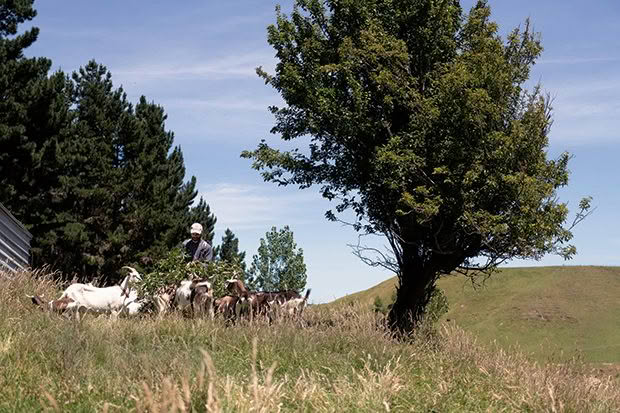
There is a saying in outdoor leadership: “Prior planning prevents piss-poor performance.” The same should be said for tethering goats.
Our methods come from a bit of online research, a bit of common sense, and a bit of trial and error. Aside from good kit and good knots, other key factors include:
1) Have a plan. To be most efficient and stress-free, there should never be a doubt where the next knot will be tied. We have developed a circuit loop over the hillside that connects the end of the cycle back to the beginning where the grass has regrown and is ready to eat.
2) Take it slow. Regularly walking one’s property is potentially the most important habit we can develop as landowners. This gives us a chance to observe any thistle outbreaks, pest damage, ageing fences or anything else that might be going on. I try to allocate enough time to shift the goats where I do not feel rushed.
3) Anticipate problems. When dealing with animals anything that can go
wrong will go wrong. A few things I’ve learned are: check all hardware connections regularly; shorten the chain along fence lines to prevent a goat from potentially hanging itself by jumping over; be conservative with setbacks to trees – goats appear to have giraffe necks sometimes!
4) Give a cuddle. Tethered goats tend to be docile and easy to handle – even bucks. I like to interact with them while shifting the tether even if it means arriving back home with a bit of goat perfume on my Swani.
Love this story? Subscribe now!
 This article first appeared in NZ Lifestyle Block Magazine.
This article first appeared in NZ Lifestyle Block Magazine.
